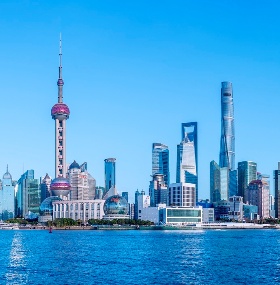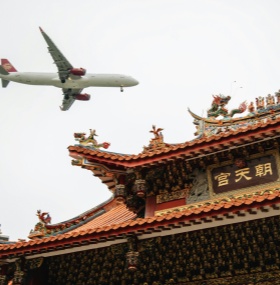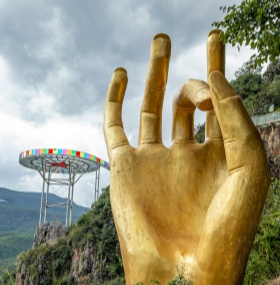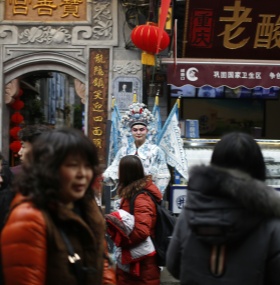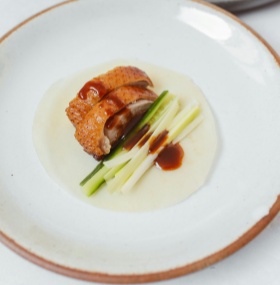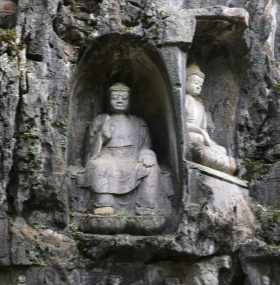China is a vast and diverse country, home to a wide range of ethnic groups, each with its own distinct culture, traditions, and history. For photographers, capturing the essence of these cultures through the lens provides an opportunity to document the rich tapestry of China’s vibrant society. From remote ethnic villages and bustling festivals to the intricate art of traditional crafts, China offers a variety of subjects that can convey its timeless beauty and cultural depth. This article will explore some of the best ways to photograph China’s ethnic traditions and festivals, highlighting the country’s cultural wealth.
Ethnic Minority Villages: The Hidden Gems of Cultural Photography
China is home to 56 officially recognized ethnic groups, each with its own language, clothing, art, and customs. These ethnic minorities often live in rural, mountainous regions, where ancient traditions are preserved. For photographers, the villages of these groups provide endless opportunities to capture timeless moments, from daily life to vibrant festivals.
Top Ethnic Villages for Cultural Photography:
Miao Villages, Guizhou Province: The Miao people are known for their intricate silver jewelry, colorful embroidery, and distinctive clothing. In Guizhou, Miao villages are set against breathtaking mountain backdrops, offering photographers dramatic landscapes and opportunities to capture daily life. Miao women, often seen weaving fabrics or making silver ornaments, make for striking subjects, especially during the Miao New Year celebrations, when the entire community dresses in its finest costumes.
Dong Villages, Guizhou Province: The Dong people, another ethnic group in Guizhou, are known for their beautiful wooden houses and picturesque, traditional wind and rain bridges. Their villages, scattered across the lush hills, are stunningly photogenic, especially during the Dong New Year festival, when locals sing traditional songs, dance, and perform ritual ceremonies. The drum towers, where elders gather to discuss village matters, also make for excellent subjects.
Tibetan Villages, Qinghai and Sichuan: The Tibetans, with their rich Buddhist heritage, live in the high-altitude regions of Qinghai, Sichuan, and Tibet Autonomous Region. The Tibetan Plateau offers wide, open landscapes with snow-capped mountains and beautiful monasteries. Tibetan people, often adorned in colorful garments and jewelry, can be seen praying, meditating, or performing rituals. The annual Shoton Festival in Lhasa is a great opportunity to capture cultural and religious ceremonies.
Photography Tips for Ethnic Villages:
Focus on portraits of people in traditional dress, capturing the emotion and pride in their expressions.
When photographing daily life, try to blend into the environment to avoid disturbing the scene. Natural, candid moments often result in the most powerful photos.
Utilize natural lighting in rural areas, as the soft, golden glow of early morning or late afternoon enhances the authenticity of your shots.
Festivals: The Spirit of Tradition and Celebration
Festivals are an integral part of Chinese culture, bringing communities together to celebrate history, family, and tradition. These events are rich with color, movement, and emotion, providing photographers with dynamic opportunities to capture the vibrancy and energy of China’s cultural heritage.
Notable Festivals for Cultural Photography:
Chinese New Year (Spring Festival): The Chinese New Year is the grandest of all Chinese festivals. From lion dances to the lighting of firecrackers, the streets are filled with excitement and energy. Traditional performances, such as the dragon dance, can be seen in cities and towns across the country. In rural areas, families gather for elaborate feasts, creating excellent opportunities to capture intimate moments of family bonding. The colorful decorations, including red lanterns, couplets, and the presence of gold and red, symbolize good luck and prosperity.
Mid-Autumn Festival: The Mid-Autumn Festival is another key event, celebrated with lantern displays, moon cakes, and family reunions. The glow of lanterns in the evening sky makes for a magical atmosphere that can be beautifully captured. Many parts of China, particularly in cities like Hangzhou and Suzhou, celebrate this festival with outdoor performances, poetry recitations, and dragon boat races.
Dragon Boat Festival (Duanwu Festival): The Dragon Boat Festival is one of China’s oldest and most exciting festivals. Held in the summer, this festival is famous for its dragon boat races, where teams of rowers race in beautifully decorated boats. The festival is celebrated by families who also make and eat zongzi (sticky rice wrapped in bamboo leaves). This is a great event for action shots, capturing the speed and intensity of the races.
Photography Tips for Festivals:
Use a fast shutter speed to freeze the action during lively festival events, such as dragon boat races and lion dances.
Low-light photography is essential during evening celebrations, especially when photographing lantern displays or firecrackers. Use a wide aperture to capture the glow of lanterns against the night sky.
For crowd shots, use a wide-angle lens to capture the scale and energy of the celebrations.
Traditional Crafts and Markets: The Art of Chinese Heritage
China’s rich tradition of craftsmanship is one of the key elements that shape its cultural identity. From silk weaving to pottery making, the country’s artisans have preserved age-old techniques that are still passed down from generation to generation. Markets, where these traditional goods are sold, provide photographers with the opportunity to capture the colorful and intricate details of Chinese craftsmanship.
Best Locations for Craft Photography:
Jingdezhen – The Porcelain Capital: Known as the birthplace of porcelain, Jingdezhen in Jiangxi Province is where the country’s finest porcelain is crafted. Photographers can document the artistry involved in the creation of porcelain, from the handcrafting of delicate pieces to the firing process in traditional kilns. The city’s pottery markets are filled with intricate designs, offering great opportunities to capture the beauty of the craft.
Lijiang Old Town Market: Lijiang, a UNESCO World Heritage Site, is known for its ancient architecture and the traditional arts of the Naxi people. The markets in Lijiang are vibrant, filled with handmade jewelry, embroidery, and wood carvings. These items reflect the cultural richness of the Naxi people, and the bustling market scenes provide an excellent opportunity to capture the daily life of the town.
Tibetan Markets: Lhasa in Tibet is famous for its traditional crafts, including Tibetan carpets, religious thangkas, and handmade jewelry. The vibrant markets are perfect for capturing the essence of Tibetan culture, with locals wearing traditional clothing and exchanging goods.
Photography Tips for Craft Markets:
Use a macro lens to capture the fine details of handcrafted items, such as the intricate designs on silver jewelry or the patterns of Tibetan carpets.
In market settings, capture both the bustling atmosphere and intimate details of personal exchanges between buyers and sellers.
Related Posts
Create Your Customized Trip
Take about 2 minutes to fill the form to tell us how you like to travel, and get a reply within 1 working day.

